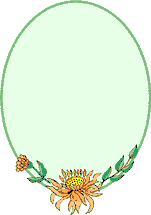

| Nasosinal Cancer in Cats |
| What are nasosinal tumors? The nasal cavity is a large air-filled space above and behind the nose. Paranasal sinuses are air-filled spaces, communicating with the nasal cavity. The most common type of cancers affecting this region are carcinomas and to lesser extent sarcomas. The metastatic rate (spread to other organs) is considered low at the time of diagnosis but can be as high as 50% at the time of death. The most common sites for metastasis are the lymph nodes and the lungs, but can also include the bone, kidneys, liver, skin, and the brain. How common are nasosinal tumors in cats? Nasosinal cancer is less common in cats compared to dogs. The average age of cats at diagnosis is 10 years, however, cats as young as 3 years have been diagnosed with this type of cancer. In general, the nasosinal tumors are only locally invasive with a low potential to metastasize (spread to other organs). What are the symptoms of nasosinal tumors in cats? The symptoms of nasosinal tumors can overlap with those of other causes of nasal disease. These signs can include nose bleeding, discharge, difficulty breathing, sneezing, facial swelling, facial deformity due to growing mass, eye discharge, weakness, and/or weight loss. Cats with discharge from one nostril, bleeding, and/or difficulty of breathing are more likely to have a tumor than other type of disease. The median duration of these symptoms is approximately 2 months. How is the diagnosis made? Advanced imaging techniques such as CT scan are superior (but expensive) tools for evaluating the location and extent of tumors in the nasal cavity as well as for planning radiation therapy treatment. Standard X-rays are still acceptable and readily accessible imaging tools but their resolution and level of anatomical detail are not as good as for CT scan. While these imaging techniques can provide a lot of valuable information, they cannot always distinguish tumors from nose inflammation. In order to definitively confirm cancerous growth in the nasal cavity, a tissue biopsy should be obtained. For nasal tumors, there is a variety of different techniques that can be used. These include vigorous nasal flushings in order to dislodge pieces of tumor or transnostril aspiration, a technique that passes a needle through the nostril into the tumor. If nearby lymph nodes appear swollen, they should be sampled for cytology to test for the presence of cancer cells that might have spread. Does cancer cause pain in pets? Pain is common in pets with cancer, with some tumors causing more pain than others. In addition to pain caused by the actual tumors, pets will also experience pain associated with cancer treatments such as surgery, radiation therapy or chemotherapy. Untreated pain decreases the pet's quality of life, and prolongs recovery from the illness, treatment or injury. It is, therefore, essential that veterinary teams that are taking care of pets with cancer should also play a vital role in educating pet owners about recognizing and managing pain in their pets. The best way to manage cancer pain in pets is to prevent it, a term referred to as preemptive pain management. This strategy anticipates pain ahead of time and administers pain medication before the pet actually experiences pain, thus ensuring the pet's maximum comfort. To learn more about which tumors are likely to cause a lot of pain, how to recognize pain in pets with cancer and what cancer pain management options are available for your pet, please visit the Cancer Pain Management section. Is nutritional support important for pets with cancer? Cancer cachexia (a term referring to progressive severe weight loss) is frequently observed in pets with cancer. Pets with cancer lose weight partly because of lack of appetite and partly because of cancer-induced altered metabolism. Some of the causes for decreased appetite are related to the cancer itself (for example, tumors may physically interfere with food chewing, swallowing, and digestion process) and some may be related to the side effects of cancer treatment (for example, some chemotherapy drugs cause nausea and vomiting, and radiation therapy can cause mouth inflammation). Proper nutrition while undergoing cancer treatment is essential to maintain your pet's strength, improve survival times, quality of life and maximize response to therapy. Adequate nutritional support was shown to decrease the duration of hospitalization, reduce post-surgery complications and enhance the healing process. Additionally, pets with cancer need to be fed diets specifically designed to provide maximum benefit and nutritional support for the patient. To learn more, please visit the Cancer Nutrition section. What are the treatment options and prognosis for nasosinal tumors in cats? There are few reports available on the treatment of nasosinal tumors in cats. The largest study included 16 cats which were treated with radiation therapy (total dose of 48Gy). The therapy was well tolerated, resulting in minimal side effects in three cats. The median survival time was 1 year, with 44% of the cats alive 1 year after radiation and 16% alive 2 years post-radiation. Are there any clinical trials for nasosinal tumors in cats? Although there are no clinical trials specifically designed to test new treatments for nasosinal cancer in cats, there are some clinical trials available for cats with any tumor type for which your pet may qualify. To learn more these trials, please visit the Cat Clinical Trials (any tumor type) section. Sources:
|




| PET CANCER CENTER Comprehensive guide to cancer diagnosis and treatment in cats and dogs |
© 2007 Pet Cancer Center. ALL RIGHTS RESERVED.
Last updated 2/19/2017




KEY TAKEAWAYS
|